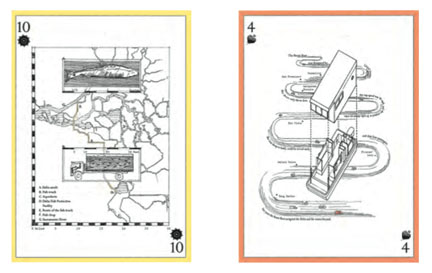learn about sustainable design by playing cards
Hey! good news for people teaching sustainable design! I’m converting this blog into a resource for ideas, tips and inspiration for your teaching. I’ll post on Thursdays and send out a newsletter once per month with these posts and some bonuses. Sign up for your inspiration over in the sidebar.
When I was doing a lot of teaching I faced constant pressure to find relevant materials and approaches to use in my class. There was never enough time to search through or vet as many resources as I would have liked.
What would have been helpful was to have someone feeding me consistent, regular news and ideas that I could grab as needed. It often doesn’t help when people present you with a whole program or an integrated approach, becuase let’s face it, your teaching materials have to fit into uniqe time frames and learning objectives. You’ve got to put your own spin on it. Usually you just need kernels you can work up as needed.
So here’s the first installment…
I read recently over on Inhabitat about a new card deck that helps you learn about sustainability. It’s the latest deck in a history of design-oriented card decks. I’ve written about them as activist tools, but here I’m suggesting them as a teaching resource.
1. Eco Innovator’s Design Play Cards are aimed at helping people learn about sustainabilty for design by taking “players” through defining the problem, exploring solutions, and applying strategies for sustainability. You can download the cards for free, or order a printed set. These could be used for a short exercise, or as prompts through a longer brief.
2. Dan Lockton’s Design with Intent toolkit contains 101 Cards, each with a pattern for influencing behavior through design. Here the aim is to become more conscious of how designers can influence behavior to  address social and environmental issues. These cards are available for free download, but you can also order printed cards. The cards offer 8 lenses through which to see influence, ranging from architecture and errorproofing to interaction and cognitive. As an example, the strategies under “architecture” include:
address social and environmental issues. These cards are available for free download, but you can also order printed cards. The cards offer 8 lenses through which to see influence, ranging from architecture and errorproofing to interaction and cognitive. As an example, the strategies under “architecture” include:
Angles | Converging & diverging | Conveyor belts | Feature deletion | Hiding things | Material properties | Mazes | Pave the cowpaths | Positioning | Roadblock | Segmentation & spacing | Simplicity
Like the first set, these could be used for a short exercise, or as prompts through a longer brief. In an exercise, different groups could work with different lenses on the same brief and report back to the group.
3. Jane Wolff’s hand drawn Delta Primer Playing Cards available from William Stout Publishers analyze and describe the competing interests among water, land and people in the delta, where the  Sacramento and San Joaquin Rivers meet in California. These cards (I’ve written more detail here) would suit a class exploring urban and rural landscape and long term landscape evolution and environmental conservation. They could work well as a guide for students conducting their own layered, complex analysis of a site or landscape.
Sacramento and San Joaquin Rivers meet in California. These cards (I’ve written more detail here) would suit a class exploring urban and rural landscape and long term landscape evolution and environmental conservation. They could work well as a guide for students conducting their own layered, complex analysis of a site or landscape.
Have any card decks to recommend? Let us know in the comments!
One Response to learn about sustainable design by playing cards
Leave a reply
Subscribe
About
Join me on the first Thursday of the month for ideas, tips and inspiration for teaching and researching sutainable design. Sign up to get these posts in your inbox.




This is great! And fun!